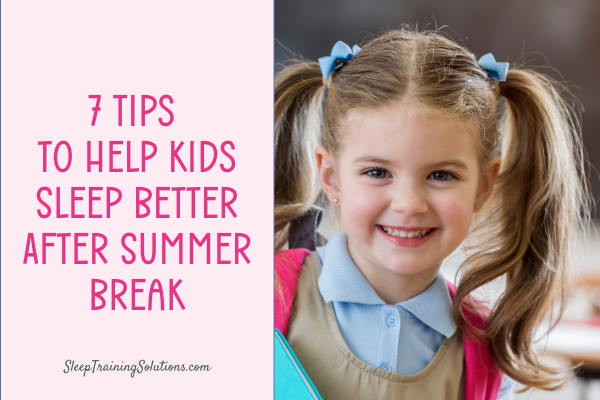3-Step Process for Successfully Implementing Quiet Time
Is your 3 year old showing signs he might be starting to drop the nap? And you KNOW he can’t go all day full speed without either taking the dreaded stroller or carseat power nap in the late afternoon or having a complete meltdown right before dinner?
You’re right! Your newly nap-free kid will most likely need a little mid-day break – not for sleep, but for non-stimulating alone time.
You’re probably thinking, but my child doesn’t play alone. Ever.
Yup, that’s usually true…unless you set them up for success.
The key is to create the optimal enviroment so they can be successful and make it a new experience that intrigues them and stays “fresh”.
Here’s the 3-step process I recommend to my clients to successfully implement quiet time:
Set clear expectations
Ease into Quiet Time gradually – talk about how your child is a big girl now and so she doesn’t have to nap anymore and now gets a special “Quiet Time” activity.
Talk about how this is her time to recharge and get energy for the afternoon since she’s not napping – how lucky is she that she can do that by playing instead of sleeping?!
Tell her after lunch, she’ll go into her bedroom and gets to choose a new bin filled with fun activities and toys to play with for __ amount of time (you set limit based on age and whether they’ve been successful with independent play time before) and when the timer goes off, the next thing she gets to do is ___ (go pick up a sibling at school, go to the playground, etc). Kids like knowing they’re doing and what comes next.
Create the optimal environment
I recommend using a visual timer and starting off with a shorter amount of time (ie 10-15 minutes) – an amount you know they’ll be successful with. Using this timer greatly reduces the, “How much longer?” hollers from your child’s doorway ;)
Prior to starting, create 4-5 clear plastic bins with 3-4 quiet time activities in each – use lidded boxes or open ones depending on whether you’ll need to stack them or not and how big the items are that you’ll be storing. I recommend storing them in the closet because the KEY is you only let them play with one bin at a time and only during Quiet Time. Label them A, B, C, etc. and each day let your child pick which one he gets to play with. When the timer goes off, it’s clean up time and the bin goes back in the closet. If you see that your child is happy playing, you can add time to the timer the next day. Try to work up to 45 minutes.
Here are some examples of items to put in each bin (obviously make sure you get activities that are age appropriate – ie watching for age-related choking hazards!) – mix and match different types of toys in each bin:
Fabric Busy Books: https://www.amzn.to/3u786uu, https://amzn.to/3o1npUx, https://amzn.to/3lXrarb
Activity Set with Washable Markers: https://amzn.to/3i5LpBV
Sorting/Matching Games: https://amzn.to/2XXh41x, https://amzn.to/3o5wBac, https://amzn.to/2XWEKTR, https://amzn.to/3zCnccA
Sorting/Shapes/Numbers: https://amzn.to/3EQFt9S
Sensory Bins: https://amzn.to/2WcqOnW
Spelling Games: https://amzn.to/3i49I3a
Fine Motor skills: https://amzn.to/39xy7JY, https://amzn.to/39D9hse
Hidden Pictures Books: https://amzn.to/3u8r0Bf, https://amzn.to/39BD18E, https://amzn.to/3zG7LQC
Magnetic Puzzle Game: https://amzn.to/3o4WcQJ
Magnetic Drawing Board: https://amzn.to/3AHPZO3Consistency
The goal during this transition period where your child is adapting to not sleeping for 12 hours straight is that he is playing quietly on his own – without stimulating toys, technology or conversations with you.
So if your child asks you to play with him during quiet time, redirect him by saying after quiet time when the timer goes off, we can ____ together.
Or if she asks to play with a bin in the morning when it’s not quiet time, remind her that she will get to pick which one she gets to play with later during quiet time. This is how you keep quiet time going – by keeping the bins available for specific, limited amounts of time.
And in the first 4-6 weeks, try not to skip a day. I see that happening when families decide to do an all day outing. What will usually happen is with the constant fun and/or fresh air and exercise all morning and afternoon, your child will snooze on the way home, making bedtime soooo much harder! After that 4-6 week period, your child will most likely have adapted to the new no-sleeping-during-the-day schedule and quiet time won’t be as necessary (although parents usually keep it in for several months because the child likes it and the parents get a break!)
If you’re not 100% sure your child is really ready to give up the nap, I’m happy to chat! To schedule an evaluation call with me, click HERE.
Related Posts:
This post is for informational purposes only and may not be the best fit for you, your child and/or your personal situation. It shall not be construed as medical advice. The information and education provided here is not intended or implied to supplement or replace professional medical treatment, advice, and/or diagnosis. Always check with your child’s physician or medical professional before trying or implementing any information read here.





